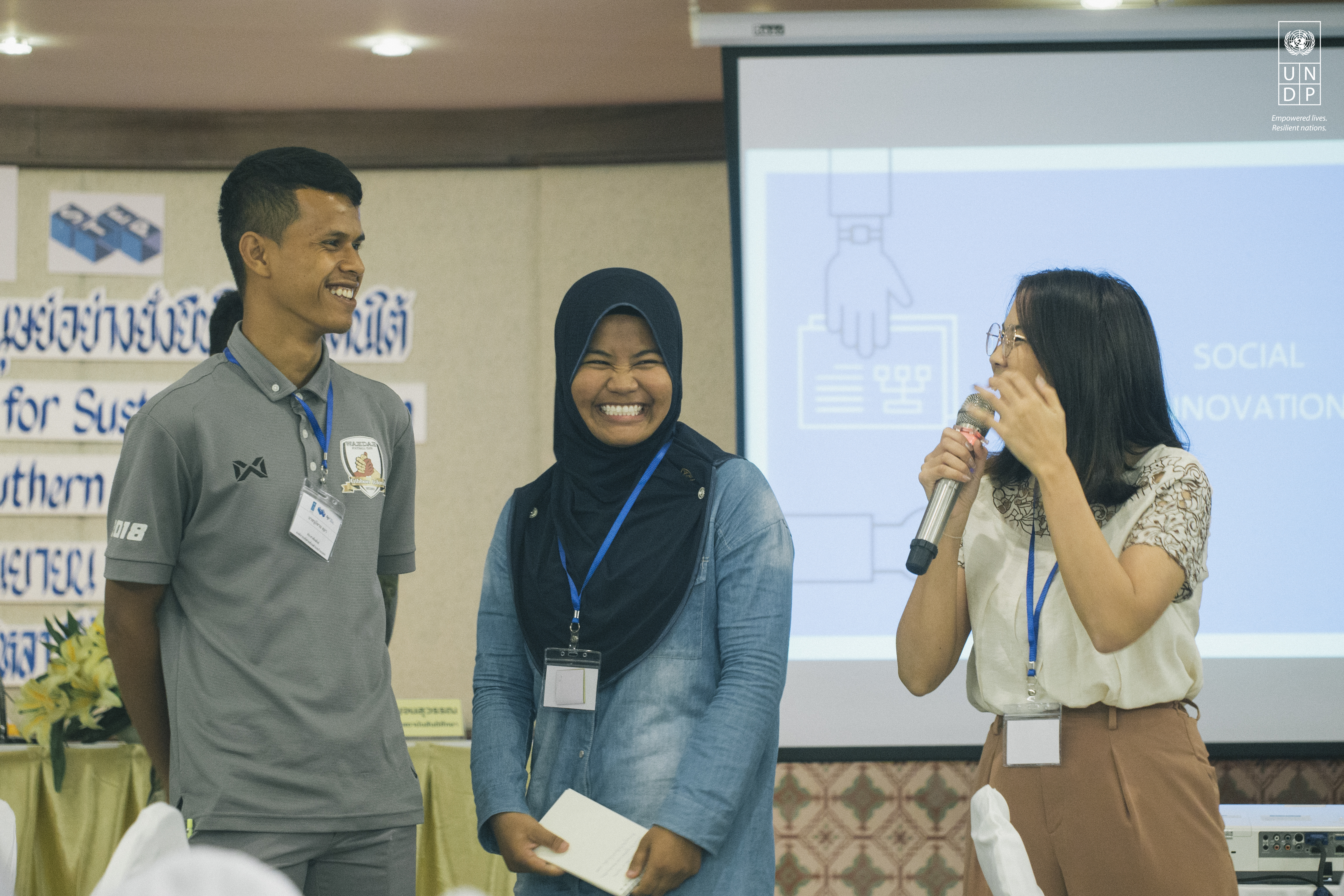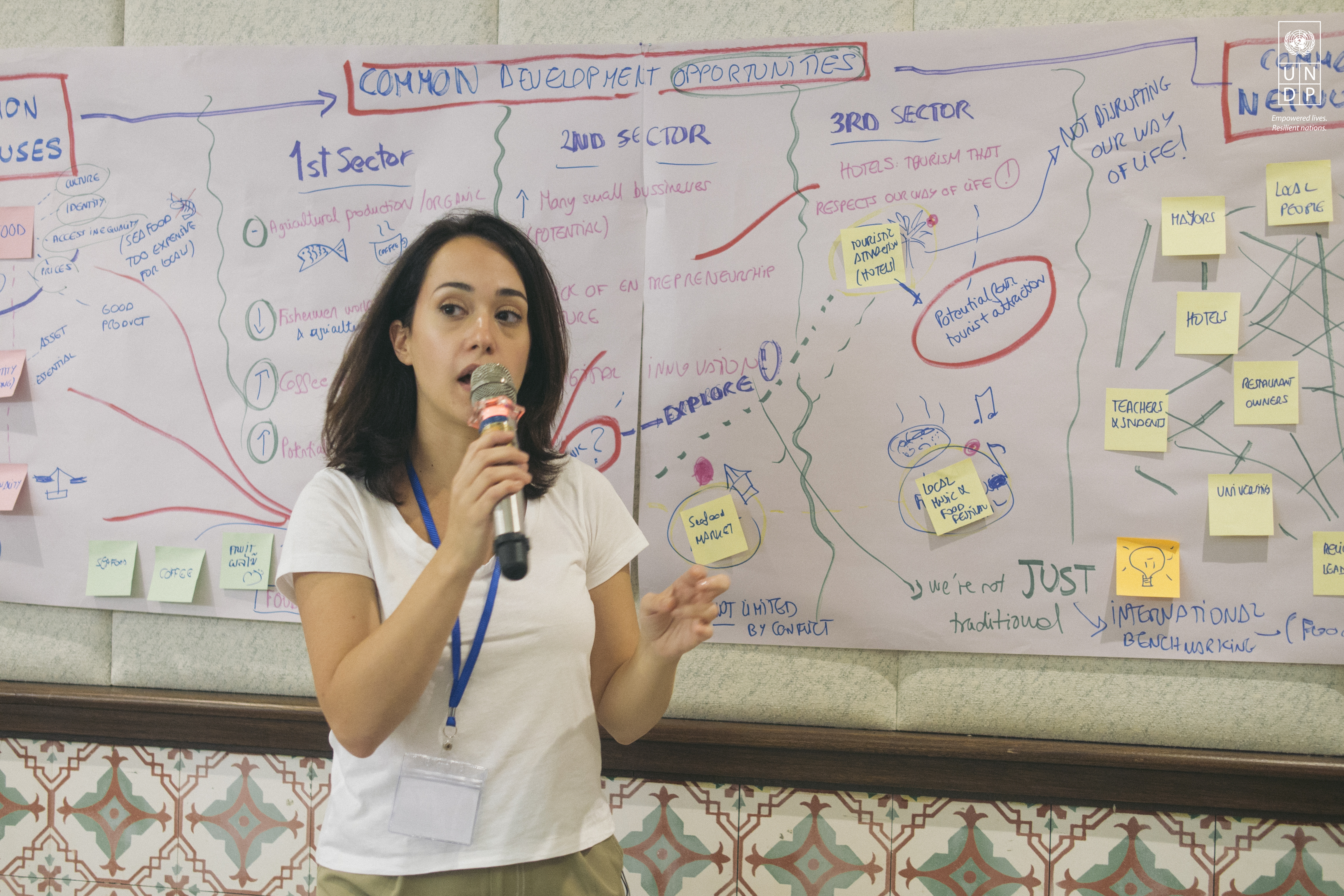- Published Date: 06/05/2021
- by: UNDP
SDGs Impact: Why it Matters for Businesses?
Written by Aphinya Siranart, Head of Exploration, UNDP Thailand
‘Business as usual’ is no longer acceptable, and certainly not conducive to the creation of a sustainable future.
The business context has changed significantly in the last decade and is set to change further in the coming years as stakeholders bring their growing influence to bear. Consumers, employees, and other stakeholders, especially millennials, are becoming even more environmentally and socially conscious. Not only are they increasingly holding companies to account for their performance on various socioeconomic issues, but they are also voicing their expectations for companies to contribute to solve the most complex challenges of our time in view of supporting the achievement of the Sustainable Development Goals (SDGs).
“The markets of tomorrow are defined by the SDGs, because they are focused on the challenges that, together with the business world, we can turn into solutions, and therefore markets for technology, for investment, for new business models.”
– Achim Steiner, Administrator, United Nations Development Program (2018)
The differing needs and values of all stakeholders demand management to adopt a wider perspective of growth, which goes beyond increased output and short-term financial returns. Recognizing that they will not succeed in failed societies, companies are balancing economic gains with social and environmental returns while also striving for an inclusive, sustainable, and long-term growth that benefits everyone – consumers, employees, supplies, shareholders, and communities alike.
By doing so, companies are not really sacrificing performance. In fact, they can do well while doing good. Many studies have found positive correlations between superior financial performance and commitment to environmental, social, and governance (ESG) issues.[1] Researchers at Harvard Business School found that companies with processes in place since the early 1990s to measure, manage, and communicate performance on ESG issues outperformed a carefully matched control group over the next 18 years.[2] A 2017 study by Nordea Equity Research reported that from 2012 to 2015, companies with the highest ESG ratings outperformed the lowest-rated firms by as much as 40%.[3]
“To prosper over time, every company must not only deliver financial performance, but also show how it makes a positive contribution to society. Without a sense of purpose, no company, either public or private, can achieve its full potential”
– Larry Fink, CEO, Blackrock (2018)

Amid the COVID-19 pandemic, the role of the private sector in supporting the achievement of sustainable human development is even more imperative today than ever before. It presents a unique opportunity for businesses to step up and turn this crisis into an impetus to achieve the SDGs. As a main source of employment and investment, the business sector plays a crucial role in efforts to protect their employees, contribute to a clean environment, support the vulnerable people, and facilitate business continuity for an inclusive, green and sustainable recovery
With these changing business environments, profits alone are no longer the measure of success and businesses must increasingly engage in sustainability reporting and impact measurement and management to improve performance, account for impact and publicly communicate sustainability data. While sustainability reporting and impact measurement both drive companies to improve performance and be more transparent, they have arisen in distinct contexts and have differences in their approach and focus.
A sustainability report is “a report published by a company or organization about the economic, environmental and social impacts caused by its everyday activities. It presents the organization’s values and governance model, and demonstrates the link between its strategy and its commitment to a sustainable global economy.” (Global Reporting Initiative: GRI) Sustainability reporting enables organizations to identify their impact on the economy, environment, and society and disclose them in accordance with a globally accepted standard.

It is encouraging to see many Thai business having sustainability strategies, policies and codes of conduct in place with good ESG disclosure practices. While ESG guidelines provide a good starting point for sustainable business, it is not enough to help unlock the enormous potential of the private sector as a driver of positive social impact. The taxonomy is weak and the criteria for sustainability lens are not ambitious enough. ESG frameworks have focused mainly on policies and processes and provided basic reporting whether qualitatively or through a selection of ESG related KPIs. It gives minimal directions, especially for investors, to measure impact as well as track and compare progress between different companies. McKinsey’s survey revealed that investors believe that “they cannot readily use companies’ sustainability disclosures to inform investment decisions and advice accurately.”[4]
On the other hand, being an impactful sustainable business means fully integrating sustainability into the business strategy, operations, stakeholder engagement and supply chain management and hence the need for companies to properly conducting impact measurement and management (IMM). IMM allows companies to demonstrate and communicate impact and to make sure they are on mission rather than just for compliance or transparency.
So what is Impact Measurement and Management (IMM)?
According to the Global Impact Investing Network (GIIN), “Impact Measurement and Management includes identifying and considering the positive and negative effects one’s business actions have on people and the planet, and then figuring out ways to mitigate the negative and maximize the positive in alignment with one’s goals”.
One of the defining challenges for impact practitioners has been the question of what, exactly, “impact” means and how best to deliver it. Without clear answers, it creates a source of inefficiency and misalignment between different players from beneficiaries to enterprises to financial intermediaries and to the owners of capital.
SDGs as a reference framework for Measuring and Managing impact
Back in 2015, the United Nations’ adoption of SDGs as a global vision for sustainable development was an absolute game changer in this field. Not only that the SDGs provide globally agreed definitions and disciplines for setting impact goals and tracking progress against them, but they also give businesses the targets they need to achieve concrete, positive impacts that truly leave no one behind. Consequently, we have seen more and more businesses start thinking of their impact in terms of contributions towards achieving the SDGs.
“Business is a vital partner in achieving the Sustainable Development Goals. Companies can contribute through their core activities, and we ask companies everywhere to assess their impact, set ambitious goals and communicate transparently about the results.”
– Ban Ki-moon, Former United Nations Secretary-General (2015)
Impact in the context of SDGs is increasingly becoming an integral component in business decision making along with revenue and risk considerations. Just as financial reporting is essential for companies to inform their strategies, measuring and managing the SDG impact of a company is becoming relevant as stakeholders, other than shareholders, pursue higher standards of responsibility and accountability from businesses.
Beyond the need to heed society’s call for increased transparency and accountability, blending purpose with profit and integrating SDG impact measurement and management framework into business operations and strategies can provide companies with several benefits as follows:
- Unlocking new business opportunities: The framework can help businesses identify new market segments, spot unmet customer needs, and as a result, develop and refine product and services offerings that are better tailored to customers’ needs. For example, by adopting such an IMM approach with the support from UNDP Business Call to Action, Thailand based social enterprise, Hilltribe Organics – a subsidiary of major organic food producer Urmatt Ltd., was able to identify a demand for organic egg.[5] Hilltribe has become the number one organic egg brand in Thailand and is now sold in major supermarkets as well as high-end restaurants and hotels. The enterprise is on the path to scaling up its inclusive business model by integrating more indigenous communities across Thailand into its agricultural value chain, thereby opening up new sources of revenue for its business as well as creating additional off-farm employment in food production.
- Marketing and reputational building: Impact data allow businesses to better understand their customers, create more effective marketing campaigns, and as a result, increase customer engagement. Plan B Media, Thailand’s biggest outdoor media company, is committed to sustainable marketing strategies and creating business value by meeting stakeholders’ expectations. Acknowledging that digital media need to go beyond providing advertising and include content for public benefits, Plan B is partnering with UNDP to launch a series of campaigns that further the SDGs in Thailand such as ending violence against women and combating single use plastics.[6]
- Strategic alignment and risk mitigation: The practice can ensure that companies’ activities are aligned with their mission and strategy as well as help identify risks that relate to both impact and financial concerns early on, thereby offering businesses an opportunity to correct action and prevent losses.

IMM can be challenging if companies have never done it before and have no clue where to start. However, by realizing various benefits that IMM may bring, UNDP, through its Business Call to Action (BctA) initiative, has developed an online Impact Lab to support companies to effectively measure and manage their impact on the SDGs.[7] The Lab goes through the full impact management process over four self-paced modules that guide companies from assessing impact measurement readiness; planning for measuring impact and designing an impact framework; monitoring impact data; to analysing and reporting impact data. Through a step by step process, companies can define their Impact Value Chain linking business operations to the SDGs, designing their own SDG impact framework with a plan for collecting data that will allow them to measure, manage and communicate their impact.
About UNDP
The United Nations Development Programme (UNDP) is the United Nations’ global development network. UNDP works in about 170 countries and territories, helping to achieve the eradication of poverty, and the reduction of inequalities and exclusion. Through assisting countries to align private sector activities and investments with the 2030 Agenda, UNDP has a long history of working successfully with companies from various sectors including energy, food and agriculture, consumer products, finance and information technology, in support of sustainable development.
In Thailand, our collaboration with the private sector takes various forms:
- Facilitate discussions between public and private sector and the civil society on a specific development theme or industry sector;
- Find solutions for development challenges through core business activities and initiatives that include low-income groups into value chains as producers, suppliers, employees and consumers;
- Mobilize private sector financial and in-kind resources for sustainable development solutions;
- Leverage innovative financing and partnerships solutions to mobilize private capital for the implementation of the SDGs;
- Provide businesses and investors with the insights and tools they need to measure, manage, and authenticate their contributions toward achieving the SDGs.
For more information, please contact Ms. Aphinya Siranart, Head of Exploration at aphinya.siranart@undp.org
[1] Mozaffar Khan, George Serafeim, Aaron Yoon, Corporate Sustainability: First Evidence on Materiality. The Accounting Review (2016) 91 (6): 1697–1724.
[2] Eccles, Robert G. and Ioannou, Ioannis and Serafeim, George, The Impact of Corporate Sustainability on Organizational Processes and Performance (December 23, 2014). Management Science, Volume 60, Issue 11, pp. 2835-2857, February 2014. Available at SSRN: https://ssrn.com/abstract=1964011 or http://dx.doi.org/10.2139/ssrn.1964011
[3]https://nordeamarkets.com/wp-content/uploads/2017/09/Strategy-and-quant_executive-summary_050917.pdf
[4] https://www.mckinsey.com/business-functions/sustainability/our-insights/more-than-values-the-value-based-sustainability-reporting-that-investors-want
[5] https://www.businesscalltoaction.org/member/urmatt-ltd-hilltribe-organics
[6] https://www.th.undp.org/content/thailand/en/home/presscenter/pressreleases/2019/undp-unveils-nationwide-campaign-to-combat-single-use-plastics–.html
[7] https://www.businesscalltoaction.org/



































